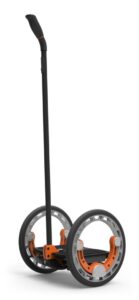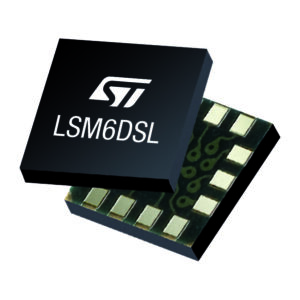The Hublex Gyropod is a self-balancing electric scooter for professionals built around ST components to increase its robustness and efficiency. Hence, it serves as a great example of how our entire ecosystem can propel the performance of such vehicle to “higher grounds”. Designed by the French company Hublex, its Gyropod assists employees working in vast areas, such as airports, warehouses, malls, etc. As a result, it must be safe, secure, light, and easy to use, regardless of the user’s experience level with such a product, or their body size. Hence, the Gyropod can reach 12 km/h, and is 40 cm (1.3 ft) wide, while weighing only 12 kg (26.5 lbs), despite its massive steering rod meant to help riders keep their balance and better control the system.
According to Infiniti Research, the self-balancing scooter market should approximate one billion dollars by 2020. This mode of transportation is increasingly popular with the public, and the emergence of hoverboards heightened its appeal amongst a younger demographic. However, these electric scooters probably have a more significant impact on companies looking to enhance working conditions and improve productivity. The issue is that putting a design together can be extremely challenging. Recent events have shown that an inadequate system can result in explosions, or even vulnerabilities in the firmware, allowing hackers to compromise the entire fleet, as we saw when we delved into securing firmware during the ST Developers Conference 2017. This is why Hublex chose various ST components to tackle these issues head-on!
Optimizing the Heart of the Self-Balancing Scooter

To better deal with the security and efficiency constraints associated with self-balancing scooters, Hublex used an STM32L476RG as its main microcontroller (MCU). Its wide operating voltage range (1.71 V to 3.6 V) implies that it will work with all sorts of batteries, meaning that the same component can fit a multitude of designs. Furthermore, its power consumption of only 120 nA in Standby mode and 30 nA in Shutdown mode leads to a lot of energy savings when idle, which is a common occurrence since the device often just waits for a user to hop on. On top of it, when in use, this STM32L4 offers an average current consumption of only 39 µA/MHz, which led the MCU to reach a score of 220 points in ULPMark, making it one of the most efficient microcontrollers in its category, only to be surpassed by the newly launched STM32L4+.
Another significant advantage offered by the STM32L4 platform is its innate ability to use the CAN protocol. Compatible with the 2.0A and B (active) standards, the MCU’s Controller Area Network can reach speeds of up to 1 Mbit/s. This is particularly important for the Gyropod because it means the different components, such as the STM32F0 used in other parts of the design, can communicate with one another without necessarily going through the central processor. Additionally, it simplifies designs by requiring fewer wires between the sensors and their control unit. Ultimately, it offers a swift and efficient way to manage essential functions, which explains why the CAN standard is in every car, and now in self-balancing scooters.
Low Power Can Mean New Possibilities
As we said above, Hublex also uses STM32F0s: two STM32F042C6 to be exact, one for the steering command link, and another for battery management. One of the main advantages of such a component is its ability to offer particular features, like a CAN interface, while giving an outstanding price-performance ratio. The architecture is easy to program, thanks to the use of a Cortex-M0, and it offers enough computing power to perform particular tasks.
For instance, Hublex was able to use it to run its own fuel gauge algorithm to better estimate battery life and offer a more relevant user experience. After all, the Gyropod must do everything it can to ensure it doesn’t run out of juice in the middle of a trip, which would defeat its purpose. It must, therefore, alert users early to make sure they recharge their device at the most opportune time.
Beyond the Hardware

Hublex also decided to use an ST accelerometer and gyroscope, the LSM6DSL. The importance of motion sensing and motion control in a self-balancing scooter is evident, but what is less apparent are the complexities inherent to a device that’s prone to massive interferences from the battery and its environment. However, where other lesser competing products might fail, the LSM6DSL thrives in this kind of situation thanks to its resistance to interferences and low-noise mode that provides higher accuracy. This will ensure that the system can offer a smoother ride and more precise adjustments. And all this happens while the sensor consumes only 0.4 mA in normal mode and 0.65 mA in high-performance mode. As a consequence, the board can use smaller and more affordable power supply components.
Finally, the Gyropod makes use of ST’s MotionFX library that takes the results from many different sensors and uses fusion algorithms to augment the precision and performance of the final product. The fact that this library, and many others like it, is open, available for free, and well documented, with open source application and example codes, ensures that a company like Hublex can jump-start its development in no time. Being able to rely on ST for such a complex feature means teams can spend more time optimizing other parts of their product to improve it in more ways than one. Ultimately, the Gyropod embodies what makes the ST ecosystem genuinely remarkable: its ability to bring the pieces of a design together to move the final product farther than ever before.
